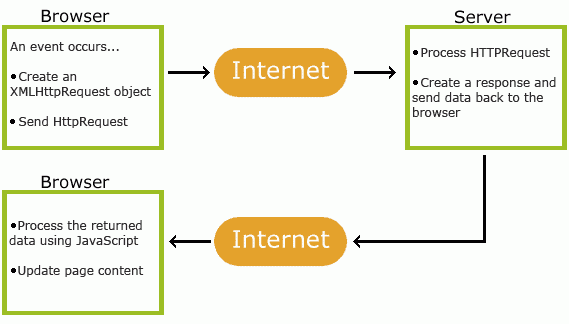Ajax is not a single technology, but a group of technologies. HTML and CSS can be used in combination to mark up and style information. The DOM is accessed with JavaScript to dynamically display – and allow the user to interact with – the information presented.
Ajax (Asynchronous JavaScript and XML) is a method of building interactive applications for the Web that process user requests immediately. Ajax combines several programming tools including JavaScript, dynamic HTML (DHTML), Extensible Markup Language (XML), cascading style sheets (CSS), the Document Object Model (DOM), and the Microsoft object, XMLHttpRequest.
JAX is a technique for creating fast and dynamic web pages.
AJAX allows web pages to be updated asynchronously by exchanging small amounts of data with the server behind the scenes. This means that it is possible to update parts of a web page, without reloading the whole page.
Classic web pages, (which do not use AJAX) must reload the entire page if the content should change.
Examples of applications using AJAX: Google Maps, Gmail, Youtube, and Facebook tabs.
How AJAX Works

